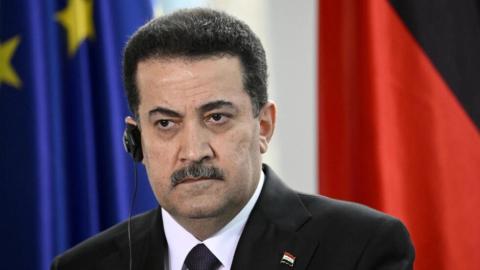
US President Donald Trump has given a 6-month period to defeat ISIS completely and begin the gradual withdrawal of US troops. Meanwhile, US officials and allies in Europe and Middle are trying to convince Trump to return to former Secretary of State Rex Tillersons strategy of staying "indefinitely" to achieve several goals, including not “handing Syria over to Russia and Iran” and not repeating the “2011 scenario of Iraq.”
Western officials told Asharq Al-Awsat that the Pentagon sent new US troops to eastern Euphrates under a decision issued by Trump at the end of the year, as part of the periodic rotation of around 2,000 troops within the Global Coalition against ISIS.
They pointed out that the deployment of hundreds of coalition soldiers to Manbij was not within the dispatch of new troops, and the transfer of troops from the east of Euphrates to northeast Aleppo was to “confirm the desire to protect allies and send a message to Turkey.”
Ankara, they added, wants to send its troops to Manbij as well and pressure an agreement with Washington that includes pushing People’s Protection Units (YPG) from Manbij to the east of Euphrates.
According to those officials, the US President repeatedly expressed his desire to initiate the withdrawal of US troops "as soon as possible" as the task of eliminating ISIS is near completion.
The officials confirmed what was published in the Washington Post and US media that Trump repeated several times that “nothing out of $7 trillion [spent] in the Middle East over the last 17 years.”
Trump indicated that its time for its allies and partners across the Middle East to ramp up their efforts to destroy ISIS, saying the involvement of US forces in Syria is “coming to a rapid end.”
At the meeting of National Security Council, Trump also indicated that he wanted to keep his election promises by focusing on US interests and withdrawing the troops from the Middle East.
Trump seemed to want to achieve his goal before the midterm congressional elections in early November, when 435 seats of the Congress and one-third of the Senate are re-elected.
A Western official told Asharq Al-Awsat that defense and foreign ministries’ officials, Central Intelligence Agency (CIA) members and National Council adviser warned Trump of repeating the same scenario as that of former President Barack Obama in 2011 when he decided to withdraw 10,000 US troops from western Iraq, which led to the formation of ISIS.
Contrary to Trumps statement that ISIS’ defeat is soon, US officials have pointed out that the terrorist organization still controls several pockets in eastern Syria with about 3,000 elements.
At the meeting, officials explained the "strategic dimensions of the US decision", pointing out that the strategy of former Secretary Tillerson was also discussed. Although Trump was "no longer impressed" with the strategy of Tillerson, who will be replaced by CIA director Mike Pompeo after Congressional approval, the meeting noted that "the strategys objectives are still valid" and include five goals: limit Iran’s influence by controlling an area on the land route between Iran, Iraq, Syria and Hezbollah, pressure Russia to achieve political transition, return of refugees from neighboring countries allied with US, and the prevention of the use of chemical weapons.
It was said during the meeting that US withdrawal "means handing Syria over to Russia, losing any pressure cards, recognizing the Iranian presence in Syria and Iraq," in addition to having the tripartite Russian-Turkish-Iranian alliance make the arrangements to fill the void, and its effect on US troops in Iraq.
A Western official said that US position after Tuesdays meeting is currently between two possibilities. First one having Trump adhere to his stance by pushing the US Army and the Coalition to achieve a full-fledged defeat in the last two enclaves and then announce the beginning of a six-month grace period for gradual withdrawal.
The second is when senior administration officials succeed, especially after John Bolton took over as national security adviser and Pompey as Secretary of State, in persuading Trump to stay in eastern Syria and communicate with allies in Europe and the region to provide military and financial support for the US mission.
At the same time, several talks resulted in financial and logistical support to strengthen local administrations and ensure stability and reconstruction in eastern Syria, as well as find ways to invest oil and gas from East Euphrates.
Experts believe areas under control of Washingtons allies contain 90 percent of Syrias 360,000 barrels per day and 45 per cent of its natural gas, agricultural crops, water dams and electricity, which means that it is possible to provide economic dependence on their own sources.
Officials expect the coming stage to witness communication within the US administration on one hand and between Washington and its Western allies and the region on the other, to determine whether US presence in Syria is for six months or possibly extending the period and fortifying their presence.












